Assistive Listening Devices
Posted on - Saturday, August 24th, 2013This month’s newsletter will discuss the new requirements for assistive listening devices, when they are needed and what is required to be compliant with the 2010 ADA standards. Assistive Listening devices are:
“An amplification system utilizing transmitters, receivers, and coupling devices to bypass the acoustical space between a sound source and a listener by means of induction loop, radio frequency, infrared, or direct-wired equipment.”
These devices are used by the hearing impaired in order to allow them to hear more clearly when amplification systems are provided in the space. For more information here is a website I found http://ideasconsultinginc.com/stay-independent/media/ccid.pdf
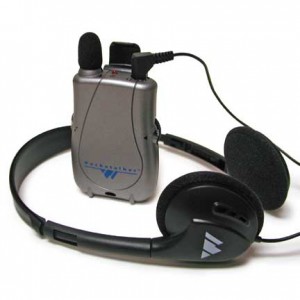
Where are assistive listening devices required to be provided?
Per the scoping of the 2010 ADA Standards 219, assistive listening devices will be required at assembly spaces where audible communications is integral to the use of the space. Some examples of assembly spaces are classrooms, lecture halls, performance areas and even courtrooms.
The 2010 Standards define the term “assembly area” to include facilities used for entertainment, educational, or civic gatherings.
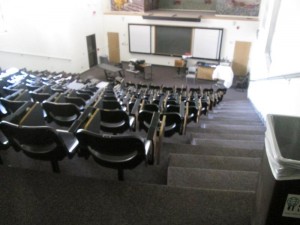
There is an exemption that if the assembly areas don’t have audio amplification systems (like speakers and microphones), then an assistive listening device will not be required. This exception does not apply to courtrooms, where they are required even if amplification systems are not provided.

Courtrooms always have to have assistive listening devices even if there is no amplification devices.
It is recommended (in the advisory), but not required, to provide assistive listening devices where there is a security glass with communication systems.

How many assistive listening devices are required
The number of receivers for assistive listening devices that are required in each assembly area is determined by the seating capacity in each assembly space. The calculations come from Table 219.3
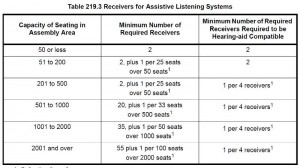
There is an exception per 219.3 that states if there are more than one assembly area that requires assistive listening devices, and they are all under one management, you can calculate the number of receivers based on the total in the entire building.

The amount of receivers used to be only in spaces where fixed seating was provided, but it is no longer calculated based on fixed seating. Any type of seating that is provided will count in this table.
Other requirements
Besides the number and locations for the assistive listening devices, there are other requirements listed in 216 and 706:
- 25% but no fewer than two receivers should be hearing aid compatible per ADA Section 706.
- Receivers required for use with an assistive listening system shall include a 1/8 inch (3.2 mm) standard mono jack.
- Assistive listening systems shall be capable of providing a sound pressure level of 110 dB minimum and 118 dB maximum with a dynamic range on the volume control of 50 dB.
- The signal-to-noise ratio for internally generated noise in assistive listening systems shall be 18 dB minimum.
- Peak clipping shall not exceed 18 dB of clipping relative to the peaks of speech.
- At each assembly area required to provide assistive listening systems, a sign informing patrons of the availability of the assistive listening system must be provided. The signs must meet the requirements in sections 703.5 and shall include the International Symbol of Access for Hearing Loss.
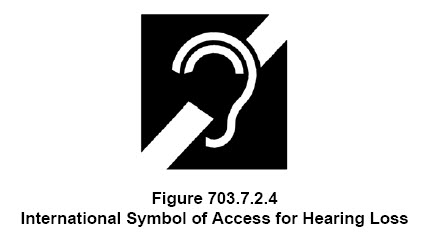
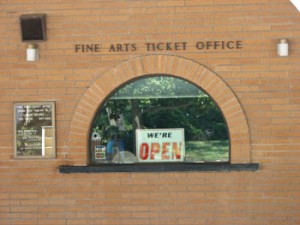
Upcoming Continuing Education Opportunities
Below are some upcoming seminars where I’ll be teaching for AIA approved CEU:
August 15: Metrocon13 in Dallas Texas: “Applying the ADA in Interiors Spaces” Two sessions one at 12:30 and one at 2:00
November 7: TSA Convention in Ft. Worth
Announcing the release of our second book: “Applying the ADA” published by Wiley. It is available for sale now. .
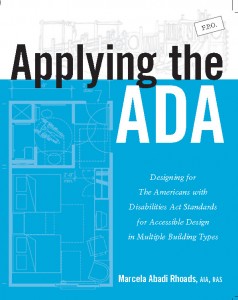
Download the android app for my book (Applying the ADA) and my website (Marcela Abadi Rhoads)
If you want to learn more about the new Standards, The ADA Companion Guide explains the 2004 ADAAG Guidelines with commentary and explanations throughout. The 2004 Guidelines were adopted by the DOJ to create the 2010 Standards and by Texas to create the 2012 TAS. This book explains the technical requirements for both.
Abadi Accessibility
 Abadi
Abadi 
